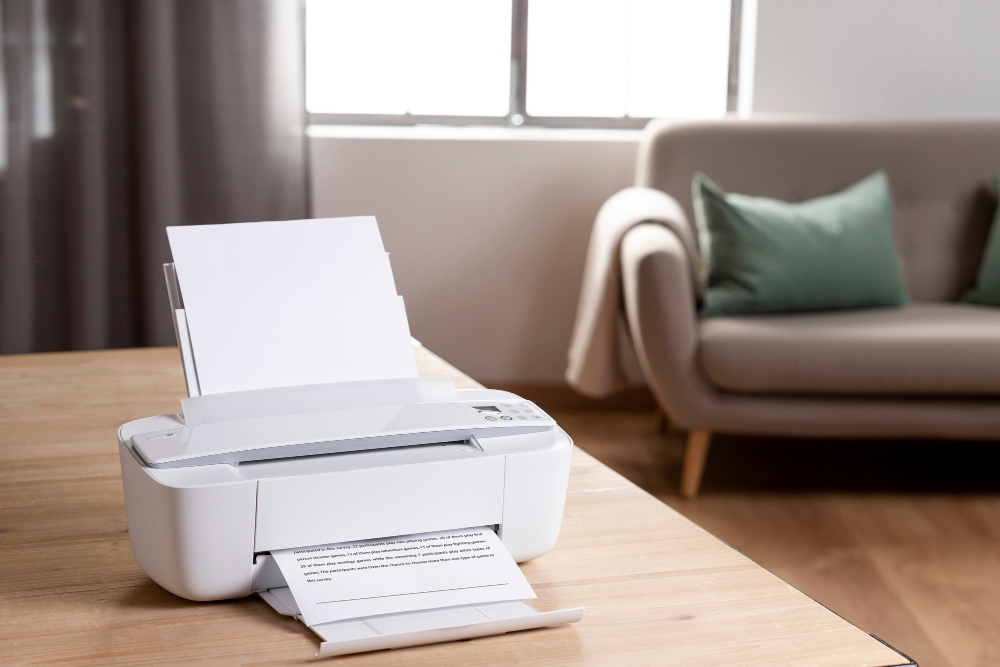Printers are essential devices for both personal and professional tasks, but configuration issues can disrupt their performance. Common problems like incorrect settings, network errors, or driver conflicts often require a reset to restore the printer to its default state. In this guide, we’ll walk you through how to reset your printer to resolve configuration issues and keep it running smoothly.
Understanding Printer Configuration Issues
Configuration issues can arise due to various reasons:
- Incorrect Settings: Changes in default settings can lead to printing errors.
- Driver Conflicts: Outdated or corrupted drivers can cause malfunctions.
- Network Problems: Connectivity issues may result from incorrect Wi-Fi or network configurations.
- Software Glitches: Printer firmware or software bugs may affect functionality.
Resetting the printer often resolves these problems by restoring factory settings and clearing any temporary errors.
Types of Printer Resets
Before diving into the reset process, it’s essential to understand the different types of resets available:
- Soft Reset:
A quick restart of the printer to clear temporary errors without affecting settings. - Factory Reset:
Restores the printer to its original factory settings, erasing custom configurations. - Network Reset:
Clears all network settings, including saved Wi-Fi credentials. - Partial Reset:
Resets specific settings while retaining others, often used for targeted troubleshooting.
Steps to Reset Your Printer
1. Soft Reset
A soft reset is the simplest way to fix minor glitches.
Steps:
- Turn Off the Printer: Press the power button to shut down the device.
- Unplug the Printer: Disconnect the power cable from the outlet.
- Wait for 1-2 Minutes: Allow the printer to discharge any residual power.
- Reconnect and Power On: Plug in the power cable and turn on the printer.
This process clears temporary memory and often resolves issues like unresponsive printers or minor errors.
2. Factory Reset
Perform a factory reset to resolve major configuration issues.
Steps for Most Printers:
- Access Printer Settings: Navigate to the printer’s control panel or touch screen display.
- Find Reset Option: Look for options like “Restore Defaults” or “Reset Settings.”
- On HP printers: Settings > Tools > Restore Factory Defaults.
- On Canon printers: Setup Menu > Device Settings > Reset Settings.
- Confirm Reset: Follow the on-screen prompts to confirm the reset.
- Reconfigure the Printer: After the reset, re-enter Wi-Fi credentials and other settings.
Important: A factory reset deletes all custom configurations, so take note of important settings before proceeding.
3. Network Reset
Use a network reset to resolve connectivity issues.
Steps:
- Go to Network Settings: Access the printer’s control panel.
- Select Reset Network Settings:
- On HP printers: Wireless Settings > Restore Network Defaults.
- On Epson printers: Setup > Network Settings > Reset Network Settings.
- Confirm Action: Follow the prompts to reset the network configuration.
- Reconnect to Wi-Fi: Use the printer’s Wi-Fi setup wizard to connect to your network.
A network reset clears saved Wi-Fi networks and resolves connectivity problems caused by incorrect configurations.
4. Partial Reset
A partial reset is useful for addressing specific issues without affecting all settings.
Steps:
- Access Reset Menu: Check the printer’s manual for instructions on accessing the partial reset option.
- Choose Desired Settings: Reset specific settings, such as print queue, language, or region.
- Confirm and Restart: Apply the changes and restart the printer.
This method is ideal for targeted troubleshooting, such as resolving regional settings or paper size mismatches.
Resetting Specific Printer Brands
1. HP Printers
- Soft Reset: Unplug the printer for 1 minute, then plug it back in.
- Factory Reset: Use the HP Smart app or printer control panel to restore default settings.
2. Canon Printers
- Soft Reset: Press and hold the Stop button until the alarm lamp blinks, then release.
- Factory Reset: Access the setup menu and select “Reset All.”
3. Epson Printers
- Soft Reset: Turn off the printer, unplug it, and reconnect after a few minutes.
- Factory Reset: Use the control panel to navigate to “Restore Factory Settings.”
4. Brother Printers
- Soft Reset: Power off and unplug the printer.
- Factory Reset: Use the control panel menu to navigate to “Initial Setup” and select “Reset.”
Preventing Configuration Issues
- Regular Updates: Keep printer firmware and drivers updated to avoid compatibility issues.
- Stable Power Supply: Use a surge protector to prevent electrical disruptions.
- Proper Configuration: Follow the manufacturer’s setup instructions carefully.
- Avoid Frequent Changes: Minimize unnecessary changes to settings.
- Backup Settings: Save custom settings for quick restoration when needed.
When to Contact Support
If resetting the printer does not resolve the issue, seek professional assistance. Contact the printer manufacturer’s customer support or consult a certified technician for advanced troubleshooting.
FAQs
Q1: Will resetting my printer delete all settings?
A: A factory reset erases all custom settings, but soft and partial resets retain most configurations.
Q2: How often should I reset my printer?
A: Resetting is only necessary when troubleshooting issues. Frequent resets are not required.
Q3: Can I reset my printer without a control panel?
A: Yes, most printers without control panels can be reset using specific button combinations. Consult the user manual for instructions.
Q4: Why does my printer keep losing network connection?
A: This may result from incorrect Wi-Fi configurations or network instability. A network reset often resolves the issue.
Q5: What should I do if the reset doesn’t work?
A: Ensure the printer has the latest firmware updates and check for hardware issues. If problems persist, contact technical support.
Conclusion
Resetting your printer is a straightforward way to resolve configuration issues and restore optimal performance. Whether you’re dealing with network errors, driver conflicts, or incorrect settings, following the steps outlined in this guide can save you time and frustration. For persistent issues, don’t hesitate to seek professional help to ensure your printer remains in top condition.






